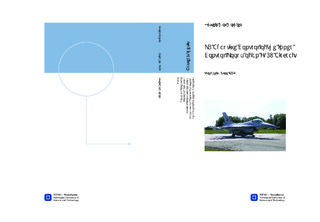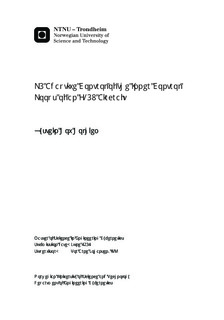| dc.contributor.advisor | Johansen, Tor Arne | nb_NO |
| dc.contributor.author | Holhjem, Øystein Hov | nb_NO |
| dc.date.accessioned | 2014-12-19T14:05:54Z | |
| dc.date.available | 2014-12-19T14:05:54Z | |
| dc.date.created | 2012-11-08 | nb_NO |
| dc.date.issued | 2012 | nb_NO |
| dc.identifier | 565967 | nb_NO |
| dc.identifier | ntnudaim:7072 | nb_NO |
| dc.identifier.uri | http://hdl.handle.net/11250/260653 | |
| dc.description.abstract | This report is written as a master s thesis given at NTNU, and in collaboration with Kongsberg Defence System. This text investigates the use of L1 adaptive control for multi-variable systems with unknown nonlinear unmatched uncertainties and unmodeled actuator dynamics, particularly for the inner longitudinal and lateral loops of a nonlinear F-16 aircraft model. Chapter 1 gives an introduction to the report by introducing the basic principles of aircraft control and specifying the goals of the text. Chapter 2 introduces the theory of linear aircraft modelling, which specifies the starting point for the L1 adaptive control design. Chapter 3 presents the L1 adaptive control theory considered in this text, together with the main theoretical results. Chapter 4 presents the simulations results and the discussion, together with the specific L1 adaptive control design used in the simulations. Chapter 5 concludes this report and points toward possible future work.The L1 adaptive control theory has proven to give good results. This was also found in this report. The controller handles unmatched nonlinearities and disturbances very well and manages to track the reference signal. For the longitudinal controller, this has also been shown through simulations on a realistic nonlinear F-16 model. Compared to the MRACformulation we see that the introduction of the filter in the L1 adaptive control formulation gives great improvements with regards to performance. The results of this text shows how the L1 adaptive controller manages to separate adaptation from control and thus be able to introduce fast adaptation without introducing high gain feedback. This text also discusses how implementation issues like limited sampling rate affects the performance of the L1 adaptive controller, and shows how this can be handled by a proper redesign of the architecture. The results of the L1 adaptive controller for the longitudinal mode are compared to a simple PID-controller. We actually see that the PID-controller performs almost as good as the L1 adaptive controller for the simple longitudinal system. | nb_NO |
| dc.language | eng | nb_NO |
| dc.publisher | Institutt for teknisk kybernetikk | nb_NO |
| dc.subject | ntnudaim:7072 | no_NO |
| dc.subject | MTTK teknisk kybernetikk | no_NO |
| dc.title | L1 Adaptive Control of the Inner Control Loops of an F-16 Aircraft | nb_NO |
| dc.type | Master thesis | nb_NO |
| dc.source.pagenumber | 173 | nb_NO |
| dc.contributor.department | Norges teknisk-naturvitenskapelige universitet, Fakultet for informasjonsteknologi, matematikk og elektroteknikk, Institutt for teknisk kybernetikk | nb_NO |

